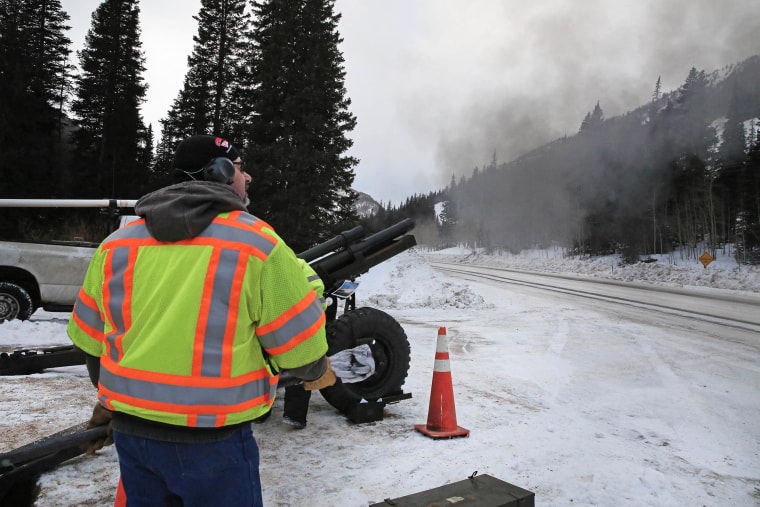Heavy snowfall this month that smothered mountains in the West has also paved the way for a perilous setting, creating some of the meanest avalanches in recent memory.
Officials are amazed about the frequency — and intensity — of avalanches since a series of snowstorms struck early this month, although the number of related fatalities hasn’t spiked this season. A string of warnings to avoid the dangerous, mountainous backcountry has helped, experts say.
“It’s been a wild three weeks,” Bruce Tremper, director of the U.S. Forest Service’s Utah Avalanche Center, told NBC News on Wednesday. “A lot of days, we’ve been at high and extreme danger, and we don’t use ‘extreme avalanche danger’ very often.”
Seventeen people from the Cascades to the Rockies have died in an avalanche this winter, 11 of them since early February, according to The Associated Press. Many more skirted disaster and survived with broken bones or other injuries. Some were partially buried in snow, but managed to dig themselves out or were dug out by companions.
Weak snow can be blamed for these hazardous conditions, Tremper said. Barely any significant snowfall earlier in the winter created only a thin wintry layer across the region. In Utah, the snow pack on Jan. 30 was only about 50 percent to 70 percent the average of what it normally should be.
Then, when the denser snow fell this month, it loosened the weaker snow layer underneath — triggering landslides.
“Basically, every part of Utah was extremely dangerous,” Tremper said. “In the Uinta Mountains in northeastern Utah, for them, it was the worst avalanche cycle ever seen in the month of February. The avalanches were extremely large, extremely dangerous and they lasted for a long time.”
He added that it’s difficult to say how many avalanches occurred, although thousands happen every winter. The bigger ones measured about a quarter-mile wide.
“Some of these avalanches were so large that no kind of rescue gear would have worked,” Tremper said.

The latest death, last weekend, came when a 49-year-old man was buried by a slide while snowmobiling in the West Cabinet Range near the Idaho-Montana border. His friend was buried with only his face exposed, but was dug out with no injuries, according to the Flathead Avalanche Center, which rated the slide forceful enough that it could destroy a car.
That same day in the Whitefish range in western Montana, three other snowmobiles riders escaped injury in two separate incidents when slides swept them down the slope.
“There really hasn’t been a … safe slope this year. To have weeks and weeks and weeks of all these avalanche warnings is basically unheard of.”
Avalanches have killed on average about 28 people a year over the past 10 years, according to the Colorado Avalanche Information Center in Boulder, which tracks national statistics. The deaths so far this year aren’t unusually high, experts say, but have come during a short time period.
According to the Colorado Avalanche Information Center, several recent avalanches ran larger than any in the past 20 years.
Craig Olsen, who runs Diamond Peaks Heli Ski Adventures north of Salt Lake City, said outdoor enthusiasts — even experienced ones — are heeding the warnings and avoiding the backcountry.
There are instances where some thrill-seekers think their snowboards, snowmobiles and other gear can handle the treacherous terrain, but that isn’t the norm, he told NBC News.
Olsen has had to temporarily cease operations of his business because of the heightened risk.
“There really hasn’t been a … safe slope this year,” Olsen said. “To have weeks and weeks and weeks of all these avalanche warnings is basically unheard of.”
The Associated Press contributed to this report.